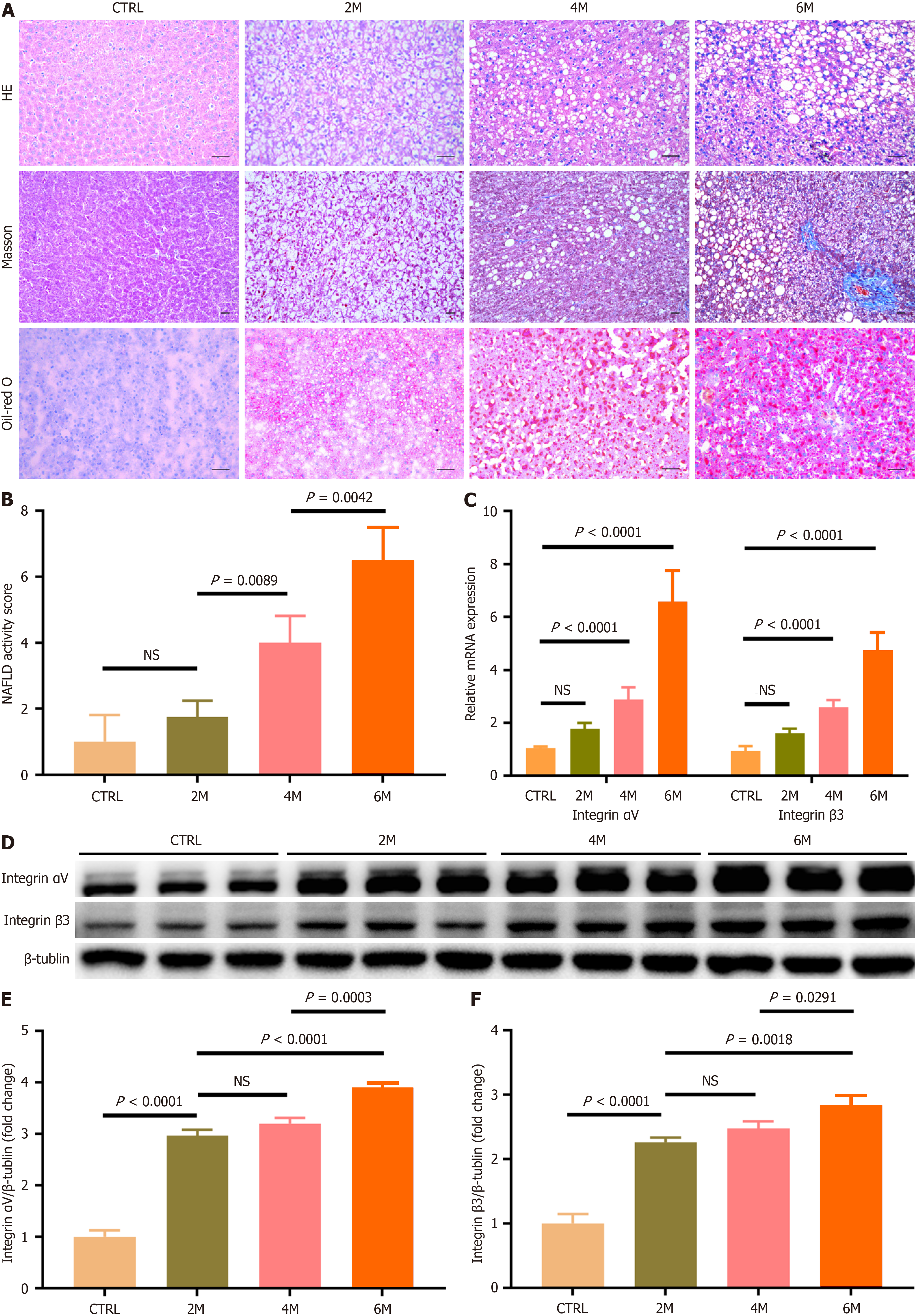Copyright
©The Author(s) 2024.
World J Hepatol. Nov 27, 2024; 16(11): 1290-1305
Published online Nov 27, 2024. doi: 10.4254/wjh.v16.i11.1290
Published online Nov 27, 2024. doi: 10.4254/wjh.v16.i11.1290
Figure 3 Expression of integrin αvβ3 in livers of rats with non-alcoholic fatty liver disease.
Non-alcoholic fatty liver disease was induced in rats by high-fat high-carbohydrate diet (HFCD) for 2, 4, and 6 months (referred to as HFCD-2M, 4M and 6M), and rats fed with regular diet for 6 months served as the control group (n= 6 per group). A: Representative micrographs of hepatic histology stained with H&E (200 ×), Masson (100 ×), and Oil-red O (200 ×), scale bars = 50 μm; B: Comparison of non-alcoholic fatty liver disease activity score in the control and HFCD-fed rats; C: Comparison of hepatic integrin αvβ3 message RNA level in the control and HFCD-fed rats. Hepatic message RNA levels of integrin αv and β3 subunits were respectively determined by quantitative real-time polymerase chain reaction analysis; D-F: Comparison of the protein amounts of integrin αvβ3 in livers of the control and HFCD-fed rats. The protein amounts of integrin αv and β3 subunits were analyzed by western-blot assay, and β-Tublin was used as the reference. In all panels, data are expressed in means ± SD. HE: Hematoxylin-eosin staining; CTRL: Normal control group; M: Month; NS: Not significant; NAFLD: Non-alcoholic fatty liver disease.
- Citation: Huang XQ, Wu L, Xue CY, Rao CY, Fang QQ, Chen Y, Xie C, Rao SX, Chen SY, Li F. Non-invasively differentiate non-alcoholic steatohepatitis by visualizing hepatic integrin αvβ3 expression with a targeted molecular imaging modality. World J Hepatol 2024; 16(11): 1290-1305
- URL: https://www.wjgnet.com/1948-5182/full/v16/i11/1290.htm
- DOI: https://dx.doi.org/10.4254/wjh.v16.i11.1290









